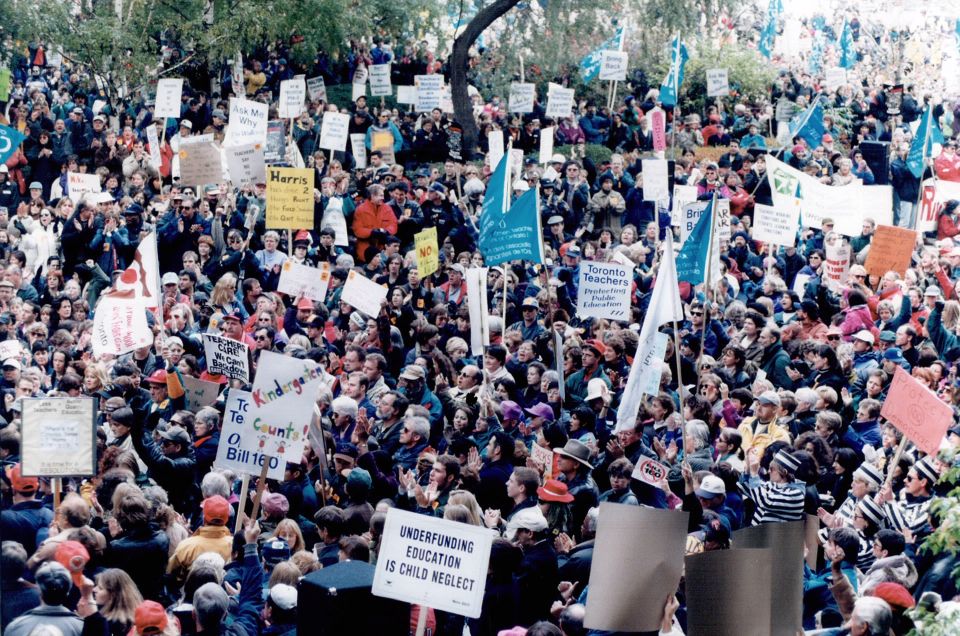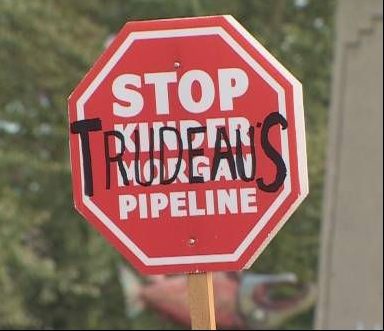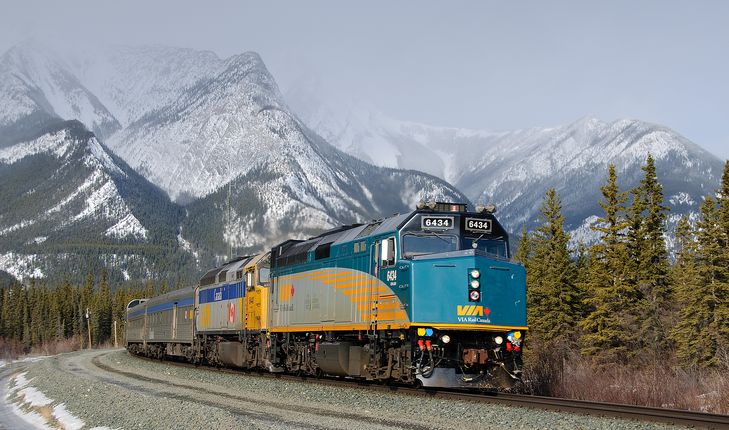
The hopes of the NDP pulling off a surprise victory didn’t materialize and Ontario workers are now faced with the prospect of the most right-wing government since the days of Mike Harris in the 1990s. Does this victory of a right-wing populist signify that Ontario (and, by implication, Canada as a whole – given Ontario’s weight within the country) has lurched to the right?
In our last article, written four days before election day, we wrote:
“the prospect of a Ford victory, seemingly inevitable 2 months ago, is by no means certain. Polls, at the time of writing, suggest a small margin of victory for Ford. Unfortunately, the electoral system and the distribution of voting support in particular ridings favours the PCs such that a 1% lead in province-wide popular support could translate into a an overall majority of 15 seats in Parliament”
As it turned out, Ford won 40% of the popular vote (only 4.5% more than the PCs got in 2014 when they lost) but in our first-past-the-post system it has translated into an overall majority of 28 seats. As one commentator noted, “Ontario voters did not radically change their political views, but movement at the margins radically changed their politicians.” (Peter Graefe, The Tyee, 9 June 2018). In other words 60% of Ontarians who voted chose parties that supported going ahead with an increase in the minimum wage to $15, expanding child care programs and introducing denticare and pharmacare. Beyond the 60-40 split of those who voted are the 42% who stayed home.
So, it would be a mistake to conclude that Ontarians have moved significantly to the right. What we can say is that voters are angry, fed up and volatile. The vote in some way fits into a pattern seen elsewhere – Brexit, elections in the US, France and Italy, to name a few – without the racism and xenophobia seen in those. But more than anything, Ford’s victory is a rejection of the governing Liberals who were decimated, retaining only seven MPPs.
Doug Ford will find that he will have a fight on his hands if he tries to cancel the scheduled $15 minimum wage increase and/or if he finds his “billions in efficiencies” through slashing spending on social programs such as health and education. Many of those workers who voted for him, taken in by his rhetoric of being the fighter for the little guy, and many who sat the election out, will join the inevitable protests that have the potential to dwarf the “Days of Action” that was a feature of the Harris era in the 1990s.
Could it have been any different?
The NDP don’t seem particularly disappointed with the election outcome. They are congratulating themselves on having had their second best ever election result. In a sense, they are right. In terms of votes won and that they are now the official opposition in Parliament, those are worthy of recognition. However, it could have been very different. Despite having a more left-wing program than in 2014, and this time being to the left of the Liberals, despite being more openly in solidarity with organized labour and low paid workers, Horwath was still keen to project herself as “safe and dependable” in managing the province and the economy. It is a sad reflection on the appeal of the NDP, that the 7% increased voter turnout benefited the PCs more than the NDP.
Horwath’s party is not a campaigning socialist force that organizes and mobilizes between elections. Most of its local branches are shells which only come alive at election time. Missing from this election, and indeed all NDP election campaigns, was the fighting spirit of, say, the Sanders or Corbyn campaigns – no mass rallies either in Toronto or in hockey arenas in small town Ontario aimed at “the 99%” or “the many not the few.” As we wrote in the last article:
It’s interesting how the Ottawa Citizen reported a Horwath rally at a Toronto hospital: “Horwath’s audience loved her, as you’d expect, but it was the idea of making the rich pay their fair share that caused a chant of ‘NDP! NDP! NDP!’ to break out.” If Horwath were to pick up on that and campaign boldly around the province, in the manner of Corbyn or Sanders, with a platform to tax the rich to pay for the NDP’s social programs and more, NDP support would grow by leaps and bounds.
Had Horwath been campaigning around the province in that way over the last three years, support for right-wing populism could have been greatly undermined. Another factor impeding NDP progress was the political role of organized labour. Over the last 20 years, it has been shameful. More from lethargy and routine, some unions, usually the more conservative ones, continued to endorse the NDP. The majority, however, adopted the approach of strategic voting which, in practice, often meant supporting Liberal candidates, including donating money and person power to Liberal campaigns. This time, seeing which way the wind was blowing (the late upsurge for the NDP), some unions that had formerly played the strategic voting game jumped off the fence, a couple of them at the eleventh hour! Too little, too late.
What lies ahead?
As some wise person remarked, “the only thing that is certain is uncertainty.” As the Ford attacks are unleashed, a lot will depend on the reaction of organized labour, rank and file union activists and the left.
It is commendable that the 15 and Fairness campaign in conjunction with the Ontario Federation of Labour, months ago, had planned a Toronto rally to take place a week after the election. Its purpose was to mobilize people to defend and promote, among other things, the implementation of the $15 minimum wage. Quite rightly, this rally was conceived on the basis that, no matter which party won on June 7, working people would have to rely on their own strength to stand up to the demands of big business. This June 16 rally could provide the focal point and impetus for building a mass province-wide opposition to the Ford agenda. And one thing is certain – Socialist Alternative members and supporters in Ontario will be fully participating in that movement.




